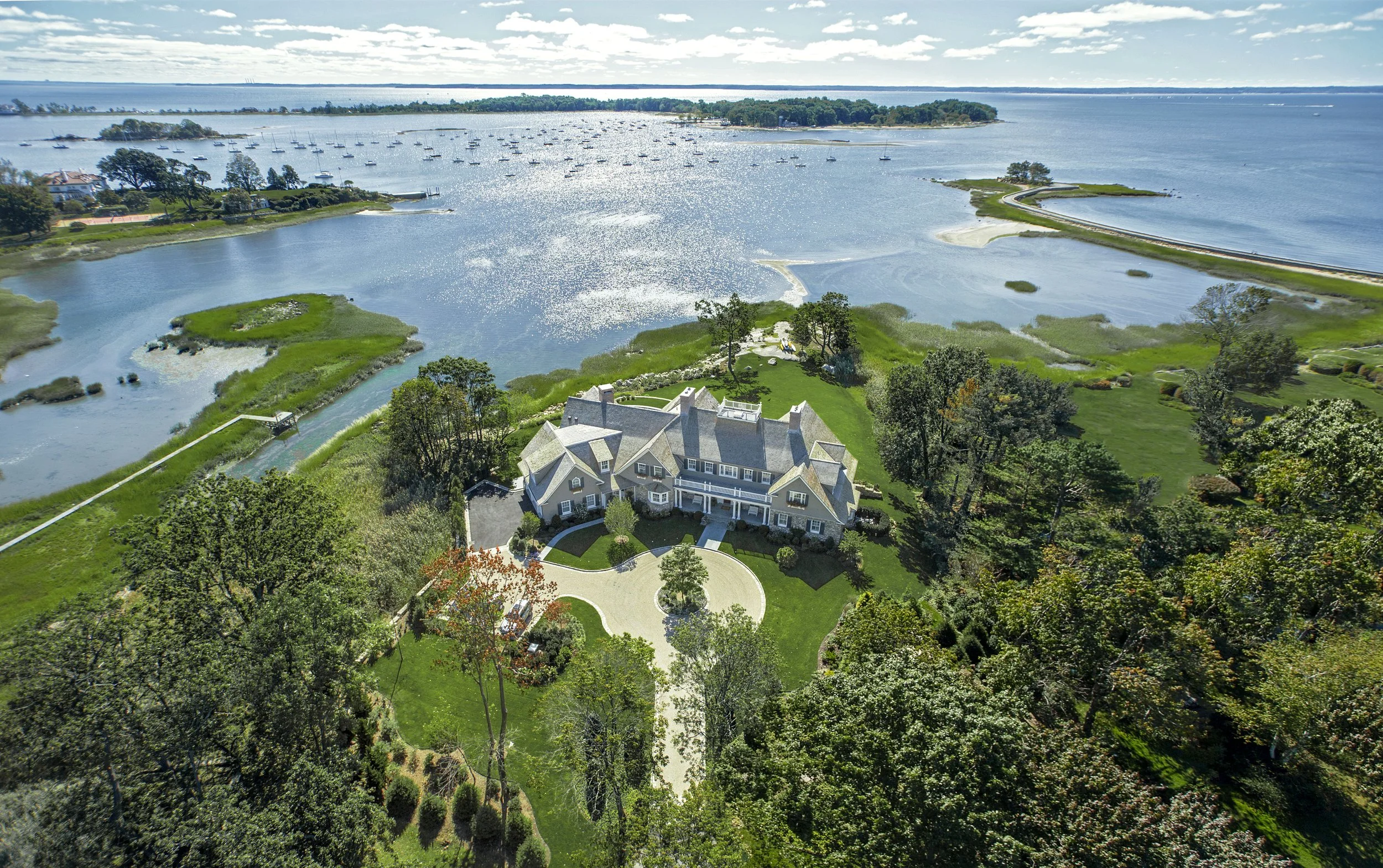The Allure of Living on a Waterfront Property
{Part 1 of a 6-part series}
Water! It engages our imagination and all our senses. Who can deny the invigorating emotional charge of a ferry ride to a favorite island destination, or the excitement of arriving for the first time at a waterfront property and experiencing the amplification and dance of the rising or setting sun off the water?
Waterfront properties elicit many emotions and reactions. There’s the mystery in the shroud of fog, and many people find relaxation in the fresh smell that permeates the air, the taste of salt on the lips, the cooling breeze across the face, the screeching call of gulls, or the crash of the surf.
New shingle-style residence in Riverside, Connecticut overlooking Greenwich Cove and Long Island Sound. Designed by Charles Hilton Architects.
In fact, living at a waterfront property and simply being around water can affect us physiologically: Waves and waterfalls not only stimulate us visually, but also exhilarate us by means of the oxygenated and ion-charged particles that moving water tosses into the air.
Humans have sought out waterfront property as dwelling places throughout recorded history. In America, homes by the water vary dramatically in style — influenced greatly by their regional environment.
First came the cabins of the colonists, built from floating logs and river stones, then the simple, cedar-shingle-clad houses of the early New England settlers. Prosperity brought grander residences: the rambling, shingle-style houses of the Victorian era; low country Southern bungalows, with their elevated living floors, wide verandas, and low-pitched roofs; and more formal styles, influenced by European architectural traditions.
Sea captains and wealthy merchants commissioned the wood-framed Greek Revival homes still seen from Maine to Georgia; industrialists constructed classically inspired, palatial waterfront “cottages” in resort communities like Newport, R.I.; dwellers of the mid-Atlantic built homes in Georgian and Neoclassical styles; homeowners in Charleston, S.C. constructed narrow, ornate, classically inspired three-story homes on waterfront property with large, double-tier verandas on tight lots.
Waterside view of The Breakers and the Cliff Walk. Designed by Peabody and Stearns – 1878.
On our southern-most coasts, which were free from winter freezing but exposed to frequent hurricanes, homeowners built heavy masonry homes with tile roofs in Spanish and Mediterranean styles.
Because I believe, with anthropologist Loren Eiseley, that “if there is magic on the planet, it is contained in the water,” I have chosen to make designing homes on waterfront property a personal specialty. Whatever the site — on a brook in the woods, on a northern lake, on Long Island Sound, or beside the open ocean — for an architect, the element of water is both inspiring and challenging. While this article is framed by my experience in designing homes on the eastern seaboard of the US, in the Caribbean, and in southern California, the issues are similar in most waterfront locations.
Waterfront residence in Montecito, California steps away from the Pacific Ocean. Renovated by Charles Hilton Architects.
If you hope to build your dream home on a waterfront property, be prepared to face five major challenges: 1) Property acquisition; 2) Regulation compliance; 3) Planning; 4) Specification of appropriate materials and construction methods; 5) Cost containment (because it will be far more complex than if you were building an inland home). We will explore these subjects in detail in the upcoming installments of our blog post.



